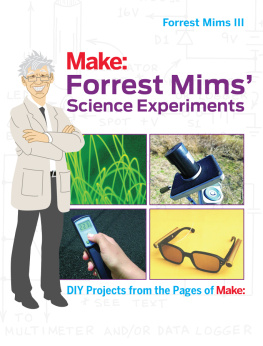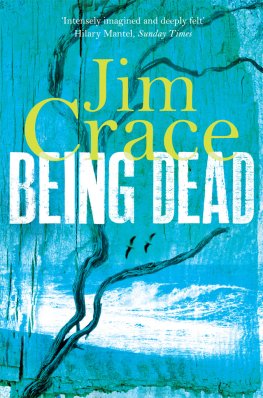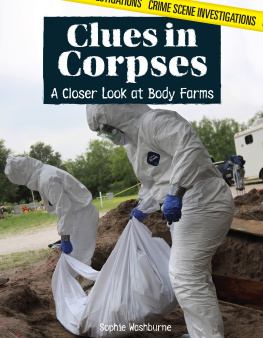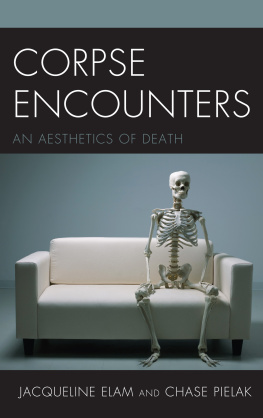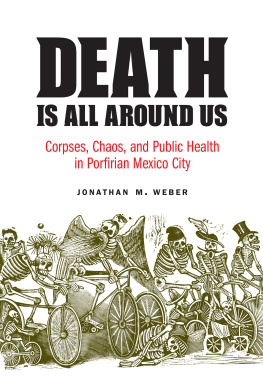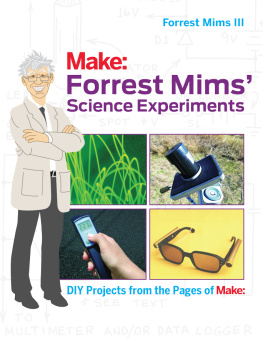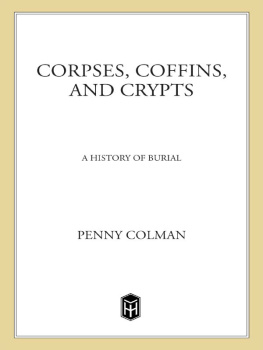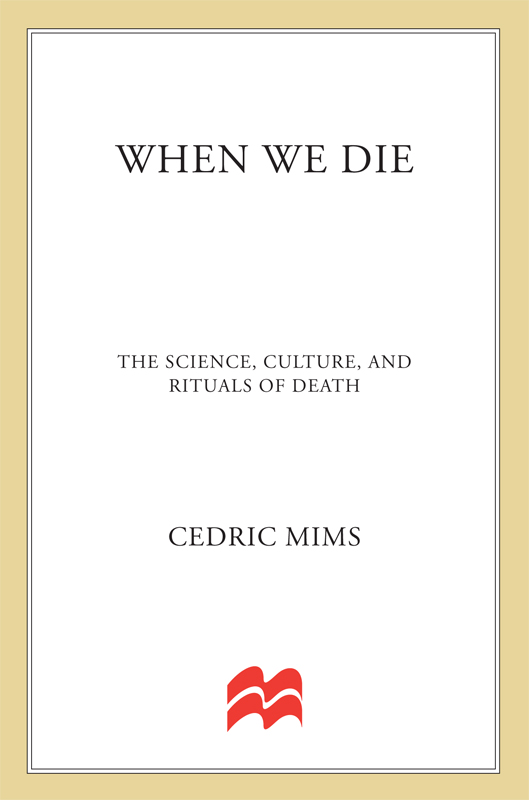Contents
Guide

The author and publisher have provided this e-book to you for your personal use only. You may not make this e-book publicly available in any way. Copyright infringement is against the law. If you believe the copy of this e-book you are reading infringes on the authors copyright, please notify the publisher at: us.macmillanusa.com/piracy.
Please note that some of the links referenced in this work are no longer active.
Contents
Acknowledgements
What started me on this trail were my fascinating lunchtime conversations with the late Professor Keith Simpson at Guys Hospital, London. Ruth Richardsons pioneering book Death, Dissection, and the Destitute has been a great inspiration. I cannot match its careful scholarship, but I owe much to her infectious enthusiasm.
I am also indebted to the following for their interest, encouragement and help, although they are in no way responsible for what I have written: Professor Matteo Adinolfi, Dr John Cairns, Vicky Mims, Dr Terry Gibson, Professor A. K. Mant, Jennifer Williams, Norman and Heike Mims, Dr Toshido Inada, Dr Bryan Furnass, Mr L. R. Squires and Mr J. R. Saunders.
Picture Credits
1a Judges Postcards Ltd, Hastings
1b, 2, 4, 6a, 6b, 7b, 7c, 8 The Wellcome Institute Library, London
5a, 5b Copyright the British Museum
7a Trevor Sutton, Studio 2
Sources
Lines from Julian Littens The English Way of Death. The Common Funeral since 1450. Reprinted with permission from The English Way of Death, by Julian Litten, first published by Robert Hale Ltd in 1991.
Lines from Ulysses by James Joyce. Copyright the Estate of James Joyce.
Extract from Autobiography and Other Essays by G.M. Trevelyan, reprinted with permission from Autobiography and Other Essays, by G.M. Trevelyan published by Longman, 1949.
Lines from The Fatal Shore by Robert Hughes. First published in Great Britain by Collins Harvill, 1987; Robert Hughes 1986. Reproduced by permission of the Harvill Press.
Ruth Richardson for lines from Death, Dissection and the Destitute, Penguin Books, 1989.
Preface
Most of us would guess that the dead vastly outnumber the living. Three hundred years ago it seemed clear enough to the English poet Edward Young (16831765): Life is the desert, life the solitude; Death joins us to the great majority. Today, though, it is not immediately obvious. The recent dramatic increase in human numbers from about 2,300 million in 1950 to their present level of 5,800 million, with a projected further rise to 8,300 million by the year 2025, makes one wonder whether at some stage there could be more of us alive than all of our ancestors put together. But it is not so. About 1 per cent of the population dies each year and altogether about 130,000 million humans have lived and died since the first emergence of our species. But most of them have lived in the past century, and it has been calculated that each of us today has no more than about twenty ancestors standing behind us. To hold all their corpses you would need a gargantuan cubical coffin measuring about 3 miles (5 km) along each side. They could then be disposed of en masse with no great impact on the landscape.
In his poem The Grave, Robert Blair (16991746) refers to the steady accumulation of corpses:
What is this world?
What but a spacious burial field unwalled,
Strewed with deaths spoils, the spoils of animals
Savage and tame, and full of dead mens bones?
The very turf on which we tread, once lived:
And we that live must lend our carcases
To cover our own offspring: in their turns
They too must cover theirs. Tis here all meet!
Luckily, corpses do not stay around. They disappear, decompose, are degraded, and their component molecules are reutilized in natures elemental cycles. In neolithic (pre-urban) times, with an estimated total human population of about 5 million and about one living person per 10 square km, disposal of the dead presented few problems. But when humans congregated into towns and cities, special burial sites became necessary. Cities, moreover, were until recently unhealthy places in which deaths exceeded births, and were often referred to as graveyards of mankind. Human numbers have increased dramatically in the past 200 years and in the USA and western Europe there are now an average of 50200 humans per square km. The weight in human flesh of those alive at the moment (5.8 billion) is about 300 billion tons. The never-ending stream of corpses has become a torrent: the 627,636 who died in the UK in 1994 would, if laid side by side, extend for 178 miles.
Increasingly efficient methods were needed to deal with such massive increases in the rate of production of dead bodies. Medieval churchyards overflowed long ago, being replaced first by public cemeteries and later by modern crematoria. Most people now die in hospitals or other institutions rather than at home, and their bodies are discreetly removed and cremated. France and England already have funeral supermarkets (the latter in Catford, London, but run by a French firm) where you can load coffin, urn or granite angel into your trolley. We have banished death from everyday life and many of us have never seen a corpse. Yet the funeral itself, which could in the end turn into a mere refuse disposal event, is still something that matters and still retains reminders of its ancient ritual character.
This book is a light-hearted but wide-ranging survey of death, the causes of death, and the disposal of corpses. It tells why we die and how we die, and what happens to the dead body and its bits and pieces. It describes the ways corpses are dealt with in different religions and in different parts of the world (burning, burying, exposing); the methods for preserving bodies (embalming, mummification, freezing); and the ways fascinating in their diversity in which corpses or parts of corpses are used and abused (dissection, organ transplants, cannibalism, human sacrifice).
I have also given consideration to our attitudes to death and to the afterlife. We are the only living things that know we will die. Evolution has endowed the human brain with the consciousness that is the core of humanity: I think, therefore I am. We can contemplate the future, think about it and worry about it. Surely it is unacceptable that each one of us should be snuffed out for good, for ever, as soon as our nerve cells have died? Not unexpectedly, many believe that there is something other than the physical body, a soul or a spirit that will survive putrefaction or cremation. Belief in some sort of afterlife has been an almost universal human preoccupation, the driving force behind some of the great religions and the source of much of the worlds art, architecture and literature.
This overview of death has led me into strange territories, and I have noticed that the more you think about the subject, the less gruesome it becomes. A variety of fascinating topics had to be explored, most of them with a brevity bordering on the scandalous, and then put in place so that the theme was pursued systematically. I hope the reader will be able to share my interest in the use of body parts (transplantation) and the subject of ageing. In many areas I have necessarily relied largely on secondary sources, and there must be errors, but the medical sections at least lay a claim to accuracy.
I have read widely and used material from other books, as listed in the References. Leonardo da Vinci (14521519) once said that anyone who invokes authors in discussion is not using his intelligence but his memory. But in the last years of the twentieth century it is not easy to say things that have never been said before, and I take comfort from the advice of the French novelist and poet Anatole France (18841924): when a thing has been said and said well, have no scruple. Take it and copy it.


